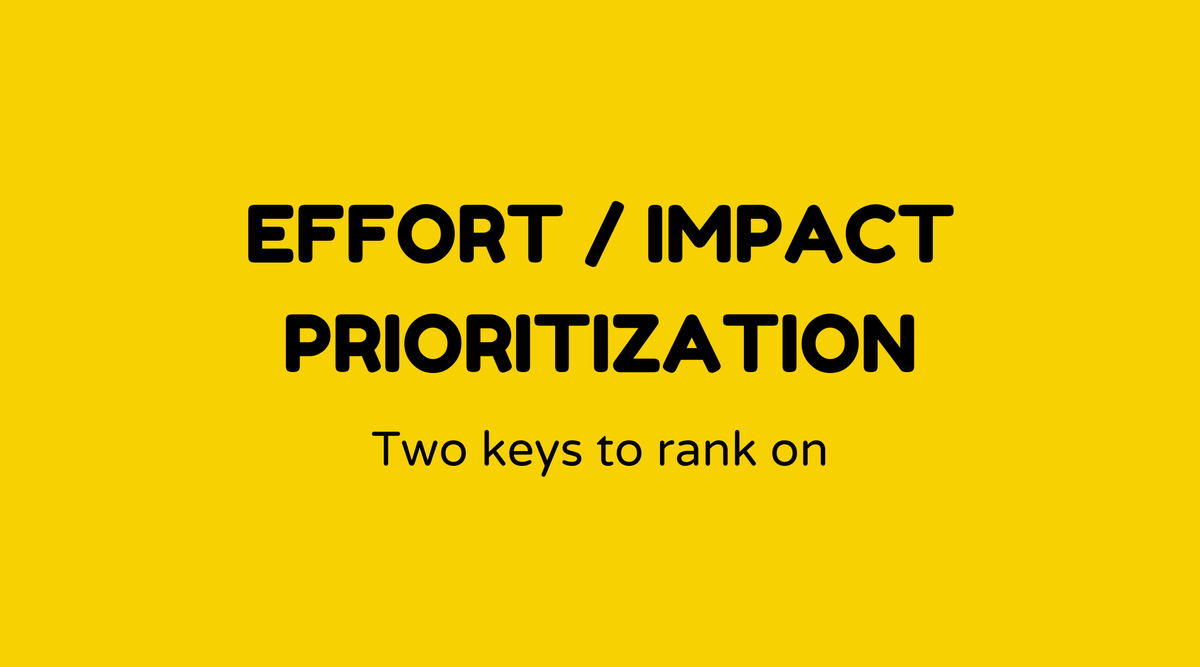Effort / Impact Prioritization

Overview of Effort / Impact Prioritization Workshop:
When choosing among various ideas or projects, Effort / Impact Prioritization serves as a practical tool. Ever felt overwhelmed by many options but unsure where to begin? This method enables teams to make strategic decisions by assessing each option based on the effort it demands and the impact it may create. By organizing a workshop focused on this prioritization technique, teams can collaboratively determine which projects to pursue for optimal outcomes.
Understanding how to effectively use this tool not only simplifies decision-making but also ensures that resources are allocated wisely. For a business aiming for efficiency and maximum output, this Effort / Impact Prioritization Workshop is essential.
Why Effort / Impact Prioritization Workshop Matters:
Every organization faces the challenge of limited resources, be it time, finances, or manpower. This is where an Effort / Impact Prioritization Workshop comes into play. It empowers teams to concentrate on projects that deliver the highest value proportional to the effort involved.
This focus is beneficial as it minimizes waste, boosts productivity, and aligns team objectives with organizational goals. Moreover, it cultivates a culture of informed decision-making. With this approach, teams transition from instinctual choices to data-driven decisions based on concrete criteria—effort and impact.
What is Effort / Impact Prioritization:
At its essence, Effort / Impact Prioritization means assessing potential projects or tasks by rating them according to the effort they require and the impact they are expected to produce. This technique is frequently visualized in a 2x2 matrix—a straightforward graph with four quadrants.
- High Effort, High Impact: These projects should be pursued cautiously, as they offer significant potential but demand substantial resources.
- Low Effort, High Impact: Often called "quick wins," these tasks should be prioritized.
- High Effort, Low Impact: Usually avoided since they consume many resources without offering considerable returns.
- Low Effort, Low Impact: Tasks that are nice-to-have, which might be addressed if resources permit but are not urgent.
How to Conduct an Effort / Impact Prioritization Workshop:
Executing an Effort / Impact Prioritization Workshop involves several key steps:
-
Preparation: Gather all stakeholders and set clear goals for the workshop. This may include compiling all potential projects or ideas in need of prioritization.
-
Introduction: Begin with a brief explanation of the matrix and the workshop's purpose.
-
Brainstorming: Allow participants to suggest projects, which can be recorded on sticky notes or an online board.
-
Assessment: For each project, evaluate the effort needed and the impact anticipated. Discuss and score these collectively to capture diverse viewpoints.
-
Mapping: Position the ideas on the 2x2 matrix based on their scores.
-
Discussion: Review the placement of projects. Are there any that require reassessment?
-
Prioritization: Decide which projects to concentrate on next based on their location in the matrix.
-
Action Plan: Develop a roadmap for the selected projects, outlining steps, timelines, and responsibilities.
Sample Agenda of Effort / Impact Prioritization Workshop:
- 10:00 AM - Introduction: Overview of the prioritization model and goals for the day.
- 10:30 AM - Brainstorming: Open session for idea generation.
- 11:00 AM - Scoring Effort & Impact: Group evaluation of each idea.
- 12:00 PM - Lunch Break
- 01:00 PM - Mapping on the Matrix: Interactive session to place ideas in appropriate quadrants.
- 02:00 PM - Review & Discussion: Discuss the matrix placements and make necessary adjustments.
- 03:00 PM - Finalizing Priorities: Agree on main projects to pursue.
- 03:30 PM - Action Plan Development: Outline next steps, including task distribution and timeline.
- 04:00 PM - Wrap Up and Feedback
Examples of Effort / Impact Prioritization:
- Tech Startups: Determining which features to develop based on market feedback and resource availability.
- Nonprofits: Selecting fundraising activities that maximize reach with minimal expenditure.
- Marketing Teams: Choosing campaigns that are likely to achieve the highest engagement relative to their execution complexity.
FAQs
How long does an Effort / Impact Prioritization Workshop typically last?
- It typically takes one full day to ensure thorough discussion and consensus-building, although some may condense it into a 3-4 hour session.
Who should attend an Effort / Impact Prioritization Workshop?
- All key stakeholders involved in decision-making, including team leads, managers, and sometimes external consultants, depending on the scope of the projects evaluated.
What tools are commonly used during the workshop?
- Digital tools like Miro or Trello for virtual boards or physical tools like flip charts and sticky notes for in-person sessions.
How often should teams conduct such workshops?
- This depends on the rate of change in the organization but typically once every quarter or when major strategy shifts are anticipated.
Can this method be applied to personal tasks as well?
- Absolutely, individuals can use the same matrix to prioritize personal projects.
What are common challenges when implementing this prioritization method?
- Reaching consensus can be challenging, as can accurately predicting the impact and effort.



